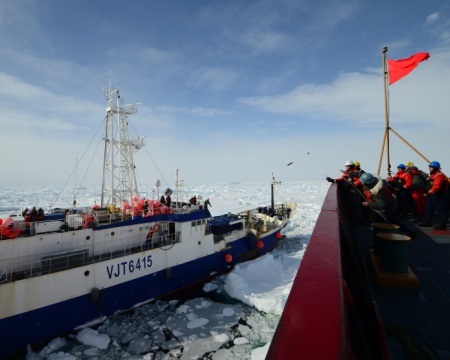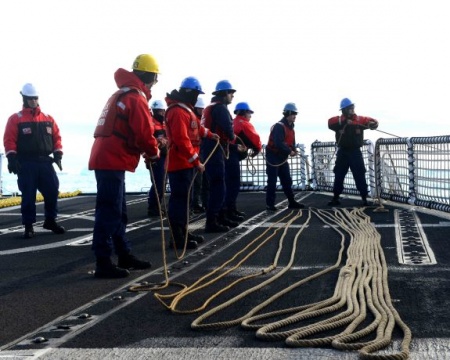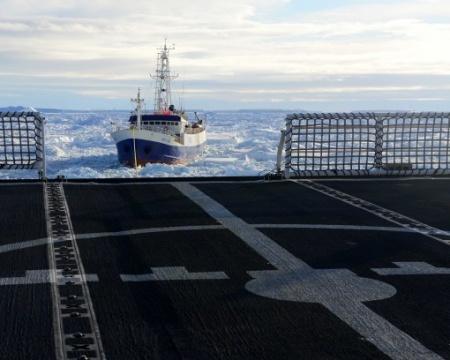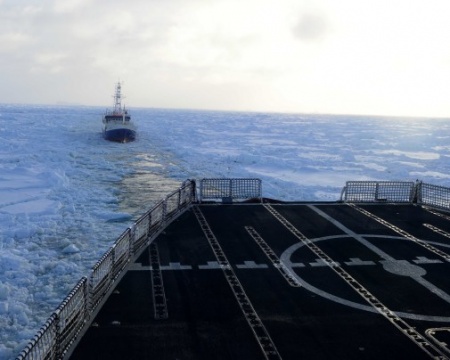Update: Fishing Vessel Under Tow in Antarctica
The Australian-flagged fishing vessel Antarctic Chieftain has now reached open water in Antarctica and has rendezvoused with New Zealand fishing boat Janas, around 40 nautical miles (75km) clear of the ice.
The Antarctic Chieftain will now head to Nelson under its own steam after it was escorted through ice for three days by the United States Coast Guard icebreaker Polar Star.
The crew of the Polar Star freed the fishing vessel on Friday night. The vessel had been beset in ice approximately 900 miles northwest of McMurdo Sound, Antarctica.
After meeting with the 207-foot fishing vessel, the crew of Polar Star took the Antarctic Chieftain in a stern tow. The vessels were surrounded by 12 to 15 feet thick ice covered with two feet of snow. Towing in ice is much more hazardous than towing in open water and is a slow process. The crew of Polar Star and Antarctic Chieftain had to remain vigilant and ready to respond to changing ice conditions.
RCC New Zealand requested Polar Star, homeported in Seattle, to respond to the Antarctic Chieftain’s request for assistance. The 150-person crew of Polar Star was deployed to McMurdo Station, Antarctica, as part of Operation Deep Freeze, which provides military logistical support to the U.S. Antarctic Program (USAP) The National Science Foundation manages the USAP.
The Polar Star is the nation’s only heavy icebreaker capable of operating in the thick Antarctic ice for a mission such as breaking out the Antarctic Chieftain or clearing McMurdo Sound for the annual resupply of McMurdo Station. The 399-foot cutter is one of the largest ships in the Coast Guard and one of the world's most powerful non-nuclear icebreakers.





